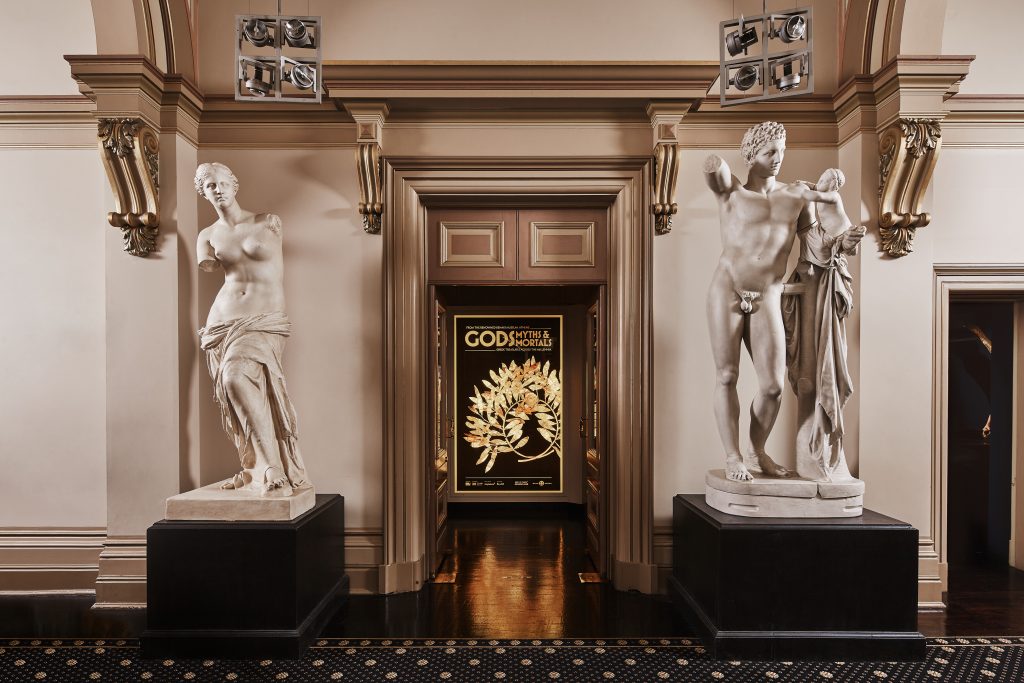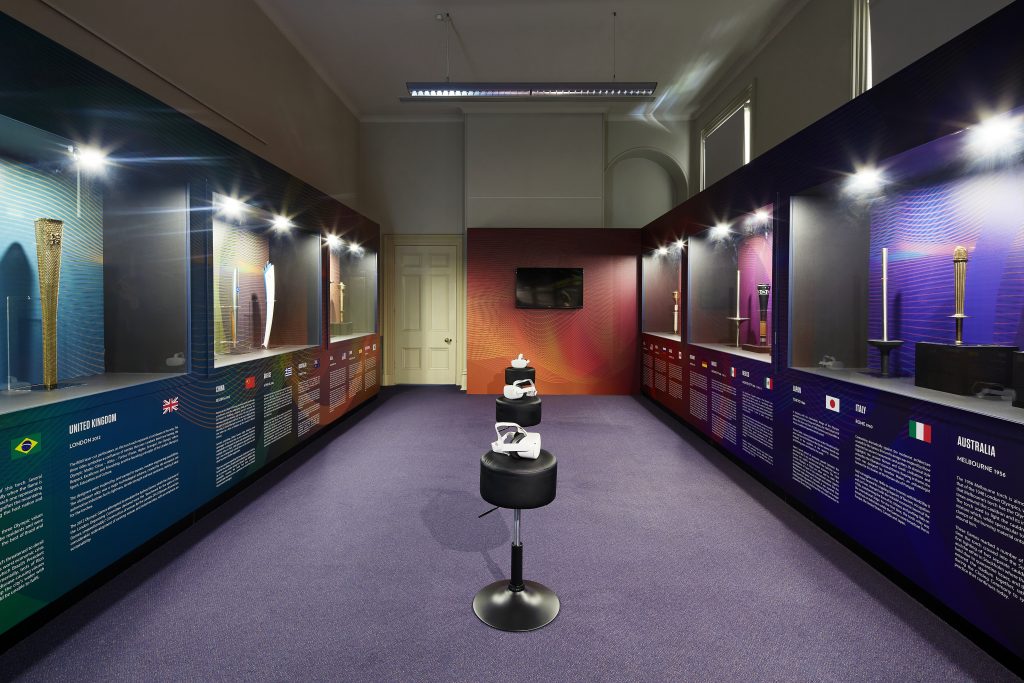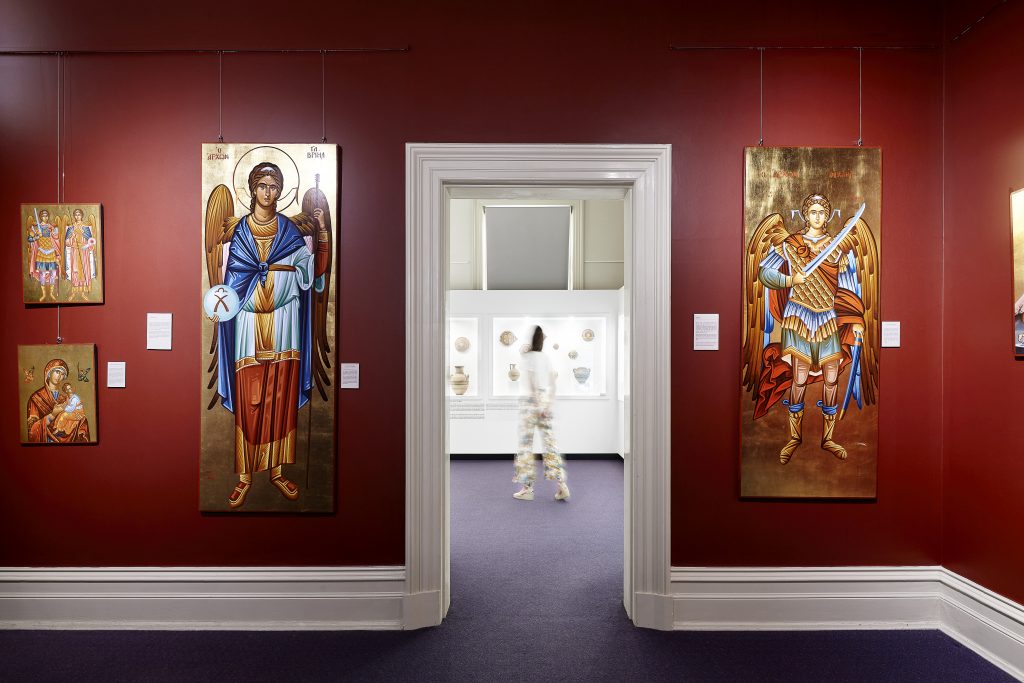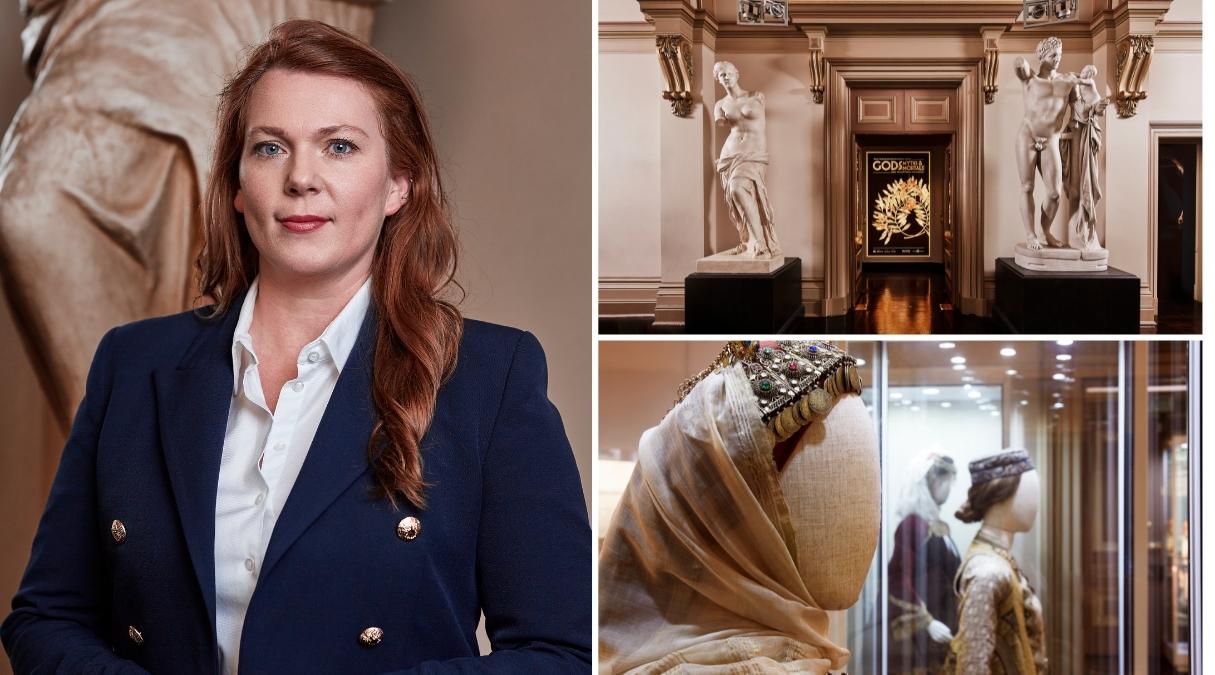By Mary Sinanidis
Hellenic Museum CEO Sarah Craig says she feels like she’s on the set of a movie every time she walks down the opulent staircase of the Royal Mint, where the museum is housed.
It’s a movie with plenty of cliff-hangers since she took over its reins in October 2020. That month, despite a deadly pandemic dominating global headlines, the Hellenic Museum in locked-down Melbourne managed to make the news on at least three occasions.
A Herald Sun top story spotlighted the now-scrapped plan of a “$244 million CBD museum” at the iconic Land Titles Office to make Melbourne “the only city outside Greece with a permanent Benaki Museum on the site”. This was swiftly followed by a statement by Greek Prime Minister Kyriakos Mitsotakis referring to the Benaki Museum’s collaboration with the Hellenic Museum as “an example of how we can bring Greek culture to Australia”.
Before the month had ended, Ms Craig took the helm as the museum’s new CEO, with outgoing John Tatoulis stating the announcement of her appointment had caught him “a little by surprise” and was perhaps “naively distributed prematurely”.

Ms Craig told The Greek Herald that she, too, was “surprised” when the Board made the decision to appoint her to the role but was also “fabulously honoured and delighted”.
Remembering her predecessor, an “ideas man”, she feels gratitude. “We worked together for six years, and it was fabulous,” she said. “I’m grateful there was so much freedom given the size and scope of the museum.”
Her rise to CEO has been swift and spectacular, starting her collaboration as an intern in 2014 while doing a Masters of Art Curatorship at the University of Melbourne. From there, she moved to volunteer, curator, assistant, curator of operations and now CEO.
“When I started, there was only one exhibition and now all the galleries are full,” she said.
Benaki Museum artefacts, a flagship display
The display of “Gods, Myths & Mortals: Greek Treasures Across the Millennia” spans over 8,000 years of Greek civilisation from 5,800BC to the Greek War of Independence.
Ms Craig knows the display well but never tires of it, stating her own connection is rejuvenated through visitors’ reactions. She learns from everyone ranging from the Australian Embroiders Guild who were “blown away by the detail, use of colour and the complexity of the stitches” to a Benaki Museum expert, who could look at animal-skin papyri and tell which hide they were made of.
Asked to share her favourite item, her choice of a seemingly unremarkable coil pot indicates where her heart lies when telling history.

“Someone has gone through all the effort of making this beautiful pot,” she said, admitting that it looks like the creations of a Year 9 pottery class. “They’ve burnished it, they’ve fired it and it has survived for 8,000 years. And we’re only a moment of time in its life and it will probably last another 5,000 years beyond us. And I think it is a special piece, an everyday piece.”
Ms Craig wants people to relate to the artefacts, to feel a connection. “So much of history is written by the victor. It was written by men up until recently. It’s written in the helmets and the gorgeous pottery and statues and gold, whereas these ones (the makers of the pot) are people like me,” she said.
She stops short of offering me tea from the pot in question, despite the museum’s philosophy of object-based handling. Real objects, not replicas, such as a sword from 800 BCE from Ms Craig’s own collection are offered to visitors to handle as “a tangible way to hold your heritage”.
Heritage, like history, is quite intricate
Wikipedia describes the museum as “one dedicated to showcasing the ongoing story of the Greek community of Melbourne”, but those hoping to find a narrative of the Greek-Australian story and tribulations of early pioneers may be a little disappointed. It’s more about art, thought and philosophy, than it is about immigrant struggles.
“I think the notion of Greekness really depends on what period you are looking at,” Ms Craig said.
“The geographic borders have continually shifted over time so that is why we are the Hellenic Museum rather than the Greek museum.”

A believer in intercultural connections, Ms Craig points to another pot from the Benaki display, adorned with a swastika. “Greeks were inspired by Indian art, and that is reflected in their own,” she said pointing to “ancient connections”.
“To say that culture is an island is a fallacy.”
Proof of how culture transcends, transforms and triggers dialogue can be seen in sculptor Sam Jinks’ commissioned work, “The Messenger” – a hyperreal depiction of messenger goddess Iris using silicone, resin, calcium carbonate, fibreglass and hair. It was a huge success when it travelled from Melbourne to Greece in 2018.
In a bougie upstairs lounge, classicist/landscape photographer Bill Henson’s “Oneirei” consists of 11 images which incorporate artefacts from the Benaki display into a moody installation of light, darkness, reality, dreams and shifting perspectives.
In another hall, the story of the Olympic Games is told through torches, while VR headsets by a Melbourne tech team allow visitors to explore ancient Olympia.
“The museum underpins all that is Hellenic, but ultimately hopes to expand to the rest of the world so we can have more conversations with more people,” Ms Craig said.

“The bigger vision is to be recognised as a place where people can go and discover and be challenged and walk away with more ideas.”
Ms Craig said this vision is not just in the museum’s DNA but at the core of Hellenic ideals. “Greece was always about growth,” she said. “The ancient Greeks were always challenging, always striving, always looking forward and I really think if we didn’t honour that here, we would be remiss.”
Looking to the museum’s future
Despite expansionist aspirations, the high hopes and hype surrounding the move to the refurbished Land Titles Office fell flat.
“We just couldn’t get it across the line,” Ms Craig said. “The Board decided it was not viable for us, which was disappointing because so much work had gone into it from both sides, but we’re still looking to grow.”

Growth can take many forms. With the Benaki Museum display set to end in 2024 and the world slowly returning to normal, Ms Craig said that there are conversations brewing and discussions taking place.
Ms Craig said the museum is “a Greek dream which changed over time”. She adds, however, that the original vision of businessman/philanthropist Spiros Stamoulis “to share Greek cultural heritage, but ultimately for everyone to buy into why it is important” is slowly being realised.
As a “passionate philhellene” who first fell in love with Hellenic culture through her mother’s telling of ancient myths tweaked with happy endings, Ms Craig is one who shares the dream and well positioned to carry on the legacy.
The Hellenic Museum is located at 280 William Street, Melbourne. Telephone (03) 8615 9016.
UPCOMING EVENTS AT THE HELLENIC MUSEUM
- 11 March, 1-3pm
International Women’s Day Fund-raiser held by the Hellenic Museum Ladies’ Society, tickets $130
- 22 March, 6.30-7.30pm
Live art and storytelling with John Hughs and Marco Luccio Art and storytelling collide as Greek myths are read aloud while art is created live, $20
- 2 April, 11-12.30pm
Seasonal scents, Easter edition Guests must be over 16 to attend this soy candle-making workshop, $95
- 14 April, 11am-12.40pm
Magic and Medicine Masterclass An educational workshop for students from 7 to 13 years during Term 1 school holidays, $18
- 23 April, 11am-12.40pm
Pigments of the Past Experiment Experiment with ancient paints during Term 1 of the school holidays for students aged from 7 to 13 years, $18
- 9 July, 5-9pm
Hellenic Arts Fest: Mythical Feast – Atalanta Greek myths via a gastronomic experience, $195 First Saturday of every month from 11.30am-12.30pm guided tours are held by the museum’s curator, Tickets at $17 (adults) and $12 (concessions).

